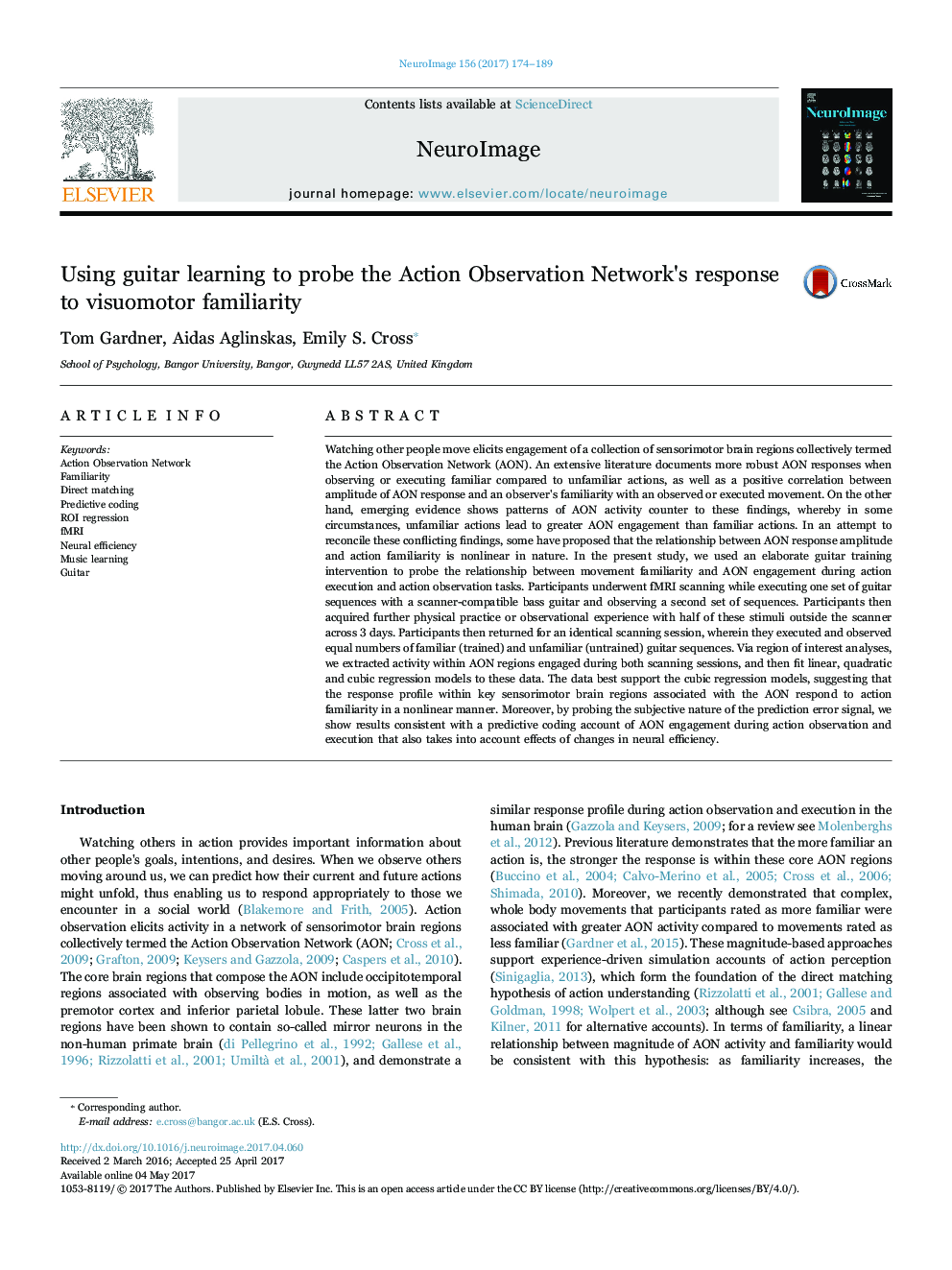| Article ID | Journal | Published Year | Pages | File Type |
|---|---|---|---|---|
| 5631017 | NeuroImage | 2017 | 16 Pages |
â¢The impact of familiarity on AON engagement is debated to be linear vs. nonlinear.â¢We fit regression models to AON ROIs for guitar riff observation and execution.â¢A cubic model best captured AON responses to familiarity for both conditions.â¢Participants' subjective ratings of familiarity reflected a similar cubic function.â¢Findings support a predictive coding + neural efficiency account of familiarity and AON engagement.
Watching other people move elicits engagement of a collection of sensorimotor brain regions collectively termed the Action Observation Network (AON). An extensive literature documents more robust AON responses when observing or executing familiar compared to unfamiliar actions, as well as a positive correlation between amplitude of AON response and an observer's familiarity with an observed or executed movement. On the other hand, emerging evidence shows patterns of AON activity counter to these findings, whereby in some circumstances, unfamiliar actions lead to greater AON engagement than familiar actions. In an attempt to reconcile these conflicting findings, some have proposed that the relationship between AON response amplitude and action familiarity is nonlinear in nature. In the present study, we used an elaborate guitar training intervention to probe the relationship between movement familiarity and AON engagement during action execution and action observation tasks. Participants underwent fMRI scanning while executing one set of guitar sequences with a scanner-compatible bass guitar and observing a second set of sequences. Participants then acquired further physical practice or observational experience with half of these stimuli outside the scanner across 3 days. Participants then returned for an identical scanning session, wherein they executed and observed equal numbers of familiar (trained) and unfamiliar (untrained) guitar sequences. Via region of interest analyses, we extracted activity within AON regions engaged during both scanning sessions, and then fit linear, quadratic and cubic regression models to these data. The data best support the cubic regression models, suggesting that the response profile within key sensorimotor brain regions associated with the AON respond to action familiarity in a nonlinear manner. Moreover, by probing the subjective nature of the prediction error signal, we show results consistent with a predictive coding account of AON engagement during action observation and execution that also takes into account effects of changes in neural efficiency.
